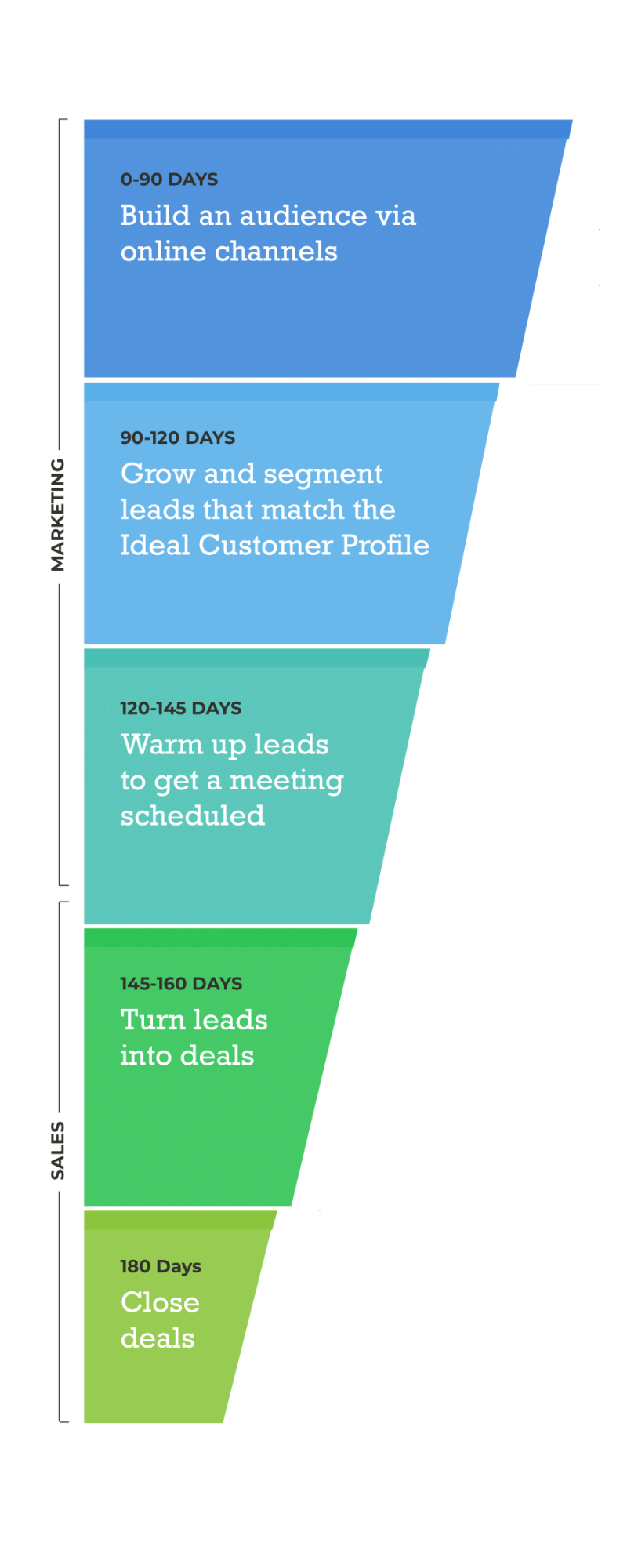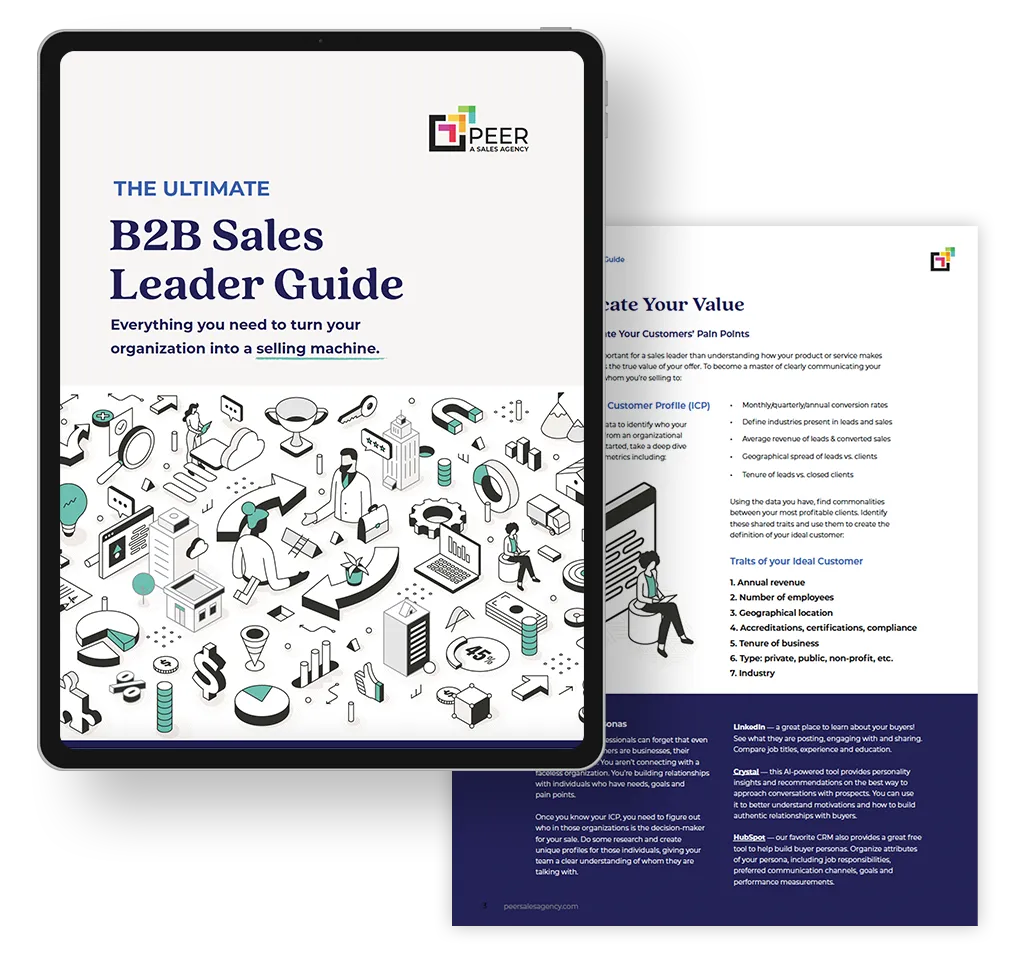You should only pay marketers for results, right?
Performance marketing operates on a pay-for-action premise. It generally describes transactions that are based on results delivered rather than sweat equity efforts by marketing agencies or in-house teams.
In the traditional sense of performance marketing, it refers to paid media campaigns because they are easily quantifiable and tracking results is transparent at a click and often conversion level.
This might include:
- eCommerce sales
- App downloads
- Podcast subscribers
- Click-throughs to landing pages
- Qualified lead signups
And any predefined and quantifiable action from a performance marketing campaign.
That doesn’t necessarily exclude earned media from performance marketing, however. In fact, earned media can play a sustainable and foundational role in traffic, lead generation, and conversions at every level in the sales funnel (more on this later).
In this article, we want to show how performance marketing can help your organization grow when done properly.

Understanding the fundamental differences – paid vs earned media
Let’s start with paid media and the role it plays in growth and performance marketing on a digital level. When you pay for traditional media ads like print, radio, and billboards, there is no way to correlate the exact relation to sales unless a specific discount or purchase code is implemented to associate with the campaign.
In the digital world, however, you can track the number of ad impressions, clicks, and depending on the nature of your business, conversions or actions taken.
Paid media is an excellent way to ramp up traffic when your business has none. You can also run campaigns and a/b tests to optimize language and better understand your audience.
These are a few common avenues for paid campaigns:
- PPC advertising
- LinkedIn ads
- Facebook ads
- Instagram ads
- YouTube pre-roll
- Display network ads
Performance marketing means you only pay for the clicks received or actions taken, not the general pool of impressions (eyes on the ad). Clicks mean an individual viewed the ad, took action, and clicked through to your website or landing page.
While this all sounds great, there are a few downsides to the oversimplified pay-per-click approach to performance marketing.
1. The business becomes dependent on ad spend. If ad budgets are pulled or the ad networks skyrocket costs or shift their model, your traffic can vanish overnight.
2. Risk is shifted to the agency running performance marketing campaigns. Control over the business model is essentially leaning on a third party.
3. Underperforming campaigns are pulled before they have a chance to mature. For example, LinkedIn campaign with a slow start will be pulled by the agency because they NEED the clicks to bill the client. Given more time, however, the LinkedIn algorithm can work to surface the campaign against a highly targeted audience.
4. Content is underserved with all the focus on ad spend and immediate results. Content is king and it builds the foundation you need for authority and to empower sales teams down the funnel.

Does earned Media have a role in performance marketing?
The ways we track earned media are somewhat different – which means it doesn’t often play a role in the traditional definition of performance marketing. The hard work is done upfront and results accumulate over a longer period of time.
While you can’t make an immediate association between spend and clicks/actions, it doesn’t mean earned media should be overlooked. Ultimately, earned media has some huge upsides for sustainable growth and performance.
Earned media typically drives results in the form of:
- Organic search traffic
- Social channel followers and engagement
- Podcast listeners
- Video channel subscribers
- Warm leads
Here’s the problem with tracking from earned media as it relates to performance marketing.
Let’s say your agency writes a series of great blog posts. They do keyword research, conduct SME interviews, and write great SEO-structured content.
As the articles go live, they promote on social channels and leverage those same articles for educational content in email marketing campaigns.
It takes search engines a while to rank the articles, however, and there is no immediate click value to assign. The lifetime value is immense, as the articles are shared, ranked, and generate consistent traffic (with high intent) over a long period of time.
At Peer, we believe content is king, and combining earned and paid media can leverage collateral assets to realize higher revenue gains. Through a holistic lens, we are redefining what performance marketing means.
Here’s how we do it…

Solving the disconnect between performance marketing and sales
The primary goal behind our approach to performance marketing is – TO MAKE SALES.
That’s it.
Without sales, every visitor and click is a waste of your investment in an agency. Organizations can’t grow without sales and every aspect of marketing should (in our opinion), align with the overarching sales strategy.
Too many marketing agencies focus efforts at the brand level. It’s about the look and feel, the impressionability and likeability. It’s too much fluff and not enough revenue-generating action.
We don’t overlook these things at the high-level sales funnel positions, but we really focus on moving those clicks and early leads down the funnel.
Without mobility in the funnel, your sales team is left waiting on empty promises.
Everything we do in marketing is designed to support and enable the sales team. CEOs and CFOs love Peer because we have evolved performance marketing to close the sales loop and actualize revenue growth.
 Beyond clicks – what your marketing agency SHOULD deliver
Beyond clicks – what your marketing agency SHOULD deliver
Sharing accountability in every stage of the pipeline is something a true growth agency partner should deliver.
For example, if your agency sends over reports showing your cost per click and number of new leads and simply hands off that information, they are stopping way short of the goal. Your sales team might have a few more leads to chase down but they don’t have any enablement to close those deals.
And remember, performance marketing is about closing more sales! At least, that’s how we do things at Peer.
When we move those leads to the sales department, we also enable sales team members with collateral, data, and anything they might need to close the deal.
We write and design:
- Sales decks
- Sales slicks
- Proposals
- Educational content
- Email sequences
And pretty much anything else that is proven to increase close rates.
Marketing agencies have the ability to identify objections early in the funnel and also to problem-solve in ways that support the sales team while they make the final push to close deals.
Here’s what you should expect from a true performance marketing agency:
- They hit the ground running from day one
- They balance innovation with best practices at ALL TIMES
- They are exceptional at audience-specific targeting
- They collect a lot of detailed information from your business
- They share accountability for driving new revenue
- They align with sales reporting
- They are honest about where you are dropping the ball and provide solutions
Ready to start?
If your marketing agency isn’t connecting to actual growth as it’s reported to the CFO and CEO, something is wrong. When you are ready for a true performance marketing partner, reach out to our team at Peer Sales Agency.





